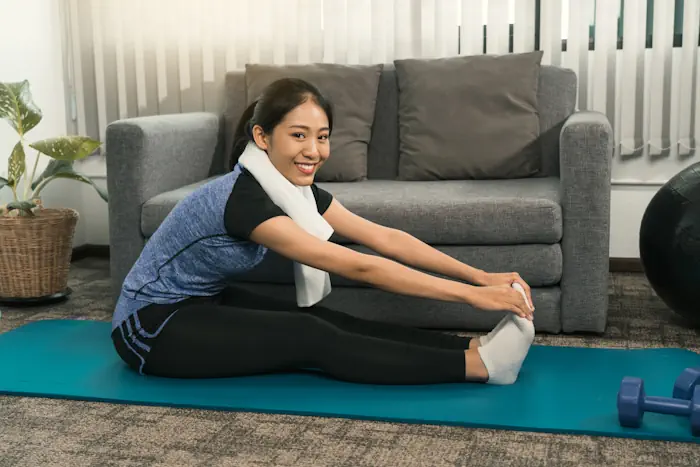Topics
What is a shoulder dislocation?
The shoulder is a moveable joint that allows the arm to move in all directions due to its ball and socket arrangement, but it also makes it unstable.
Shoulder dislocation occurs when the upper arm bone (the humerus) pops out of the shoulder socket (glenoid) in your shoulder blade. A dislocated shoulder can cause intense pain, swelling, and limited mobility in the affected shoulder.
What are the types of a shoulder dislocation?
Shoulder dislocations can be classified into three types:
- Anterior shoulder dislocation: This is the most common type of shoulder dislocation. The humerus is displaced forward and towards the front of the body. It is usually sport-related in young people, whereas it is caused by a fall on an outstretched arm in older people.
- Posterior shoulder dislocation: The humerus is displaced toward the back of the body. These are rarely seen and are typically brought on by seizures or shocks. This can be due to a blow to the front of the shoulder or a fall on an outstretched arm.
- Inferior shoulder dislocation: This is the rarest type of shoulder dislocation, where the top of the humerus is displaced downwards. This can be caused by many types of trauma in which the shoulder is violently pushed with a downward force. It can also occur after an epileptic fit or electrocution injury.
What are the symptoms of a shoulder dislocation?
Below are some common shoulder dislocation symptoms:
- Severe shoulder pain
- Limited range of motion of the shoulder
- Square appearance of the shoulder rather than round
- May be able to see a bulge or lump (the top of the humerus) under the skin in front of your shoulder
- Numbness or weakness in the arm, hand, fingers or neck
- Muscles spasms in the shoulder
What are the causes of chronic shoulder instability?
Some of the causes of chronic shoulder instability:
- Previous dislocation: The chances of future shoulder dislocations are higher and can increase significantly if you have had a previous shoulder dislocation.
- Hyperlaxity: Some individuals with shoulder instability have never experienced a dislocation. Most of these patients have looser shoulder ligaments. Occasionally, the looseness is the result of repeated overhead motions through sports injuries. Sports activities such as swimming, volleyball and tennis demand repetitive overhead motion that might cause shoulder ligaments to be stretched. It may be challenging to maintain shoulder stability if ligaments are looser.
How is a shoulder dislocation diagnosed?
Your doctor would first question your general health and symptoms before conducting a thorough physical examination. Diagnosis is made based on your reported symptoms, physical examination, and investigations.
If your physical examination indicates that you may have a dislocated shoulder, your doctor will request shoulder X-rays to confirm the diagnosis. If you have a fracture, you may undergo further scans to investigate the affected area in significant detail.
How is a shoulder dislocation treated?
There are three steps in treatment of shoulder dislocation:
- Closed reduction: The ball of the upper arm is pushed back into the socket. You may be given medication to relieve pain and muscle relaxants for your shoulder. Once the joint is repositioned, the pain should subside.
- Stabilisation: The shoulder would be stabilised with a sling or other device to keep your shoulder in place.
- Rehabilitation: Exercise to strengthen shoulder muscles and improve the range of motion of your shoulder. Rehabilitation may also prevent further dislocations of the shoulder.
You may require surgery if you continue to experience severe shoulder pain following closed reduction or if your injured shoulder remains loose and unstable despite physiotherapy.
What is the fastest way to heal a dislocated shoulder?
Exercise can help to reduce pain and increase flexibility. The doctor/physiotherapist may recommend a few that best suit the patient's condition.
One or more of the following shoulder dislocation exercise types may be recommended:
Range of Motion (ROM) Exercise
Pendulum Exercises
- Stand with your uninjured hand holding a steady surface (back of a chair / wall / sturdy table) while bending slightly forward.
- Move your affected side forward and backwards in a continuous motion.
- You can also move your hands in and out in the same position.
- Repeat 10-20 times each session.
Pendulum Swing
- Lean forward with one hand on a table for support while letting the other arm hang freely.
- Gently swing your arm backwards and forwards like a pendulum.
- Repeat this exercise by moving your arm in a circular motion and moving it from side to side.
Stretching Exercises for Shoulder Dislocation
Crossover Arm Stretch
- Slowly and gently, bring your right arm over your chest.
- Hold your right arm up by the shoulder with your left hand.
- Stretch for 30 seconds straight.
- Spend the next 30 seconds with your right shoulder relaxed.
- Repeat this process another three times.
Triceps Stretch
- The right hand should be placed on the right shoulder.
- Put your left hand on your right elbow.
- Slowly raise your right elbow until you feel a pull.
- Stretch for 10-30 seconds.
- Let go of the stretch and take a break of up to 30 seconds.
- It is recommended to do this another one to three times.
Chest Stretch
- Ensure your palms are towards you as you gently clasp your hands behind your back.
- Clasp your hands together and slowly raise them until you feel a stretch.
- Hold this for 10 to 30 seconds.
- Reduce your grip force by dropping your hands slightly.
- Stay still for as long as 30 seconds.
- It is recommended to do this another one to three times.
Towel Exercises
- Hold a bath towel with your hands behind your upper back at each end.
- The towel should be placed vertically and stretch the injured hand by pulling it with the other arm.
- Do this for 10 seconds and complete ten repetitions of it.
Strengthening Exercises for Shoulder Dislocation
Isometric Extension
- Stand against a wall with your arms by your side.
- Next, keep your elbows and wrist straight, push your palms against the wall for 5 seconds, and relax. Then, slowly, aim to increase the duration of the push.
- Repeat it to complete a set of 10.
Isometric Adduction
- Place a small pillow between the injured arm and body.
- Squeeze it towards the body with your arms and hold the position for 5 to 10 seconds.
- You may increase the pillow size once you have practised on a smaller one.
External Rotation
- Start by facing a door frame and have your elbow bent at 90 degrees.
- Place the back of the hand against the frame.
- Hold it for up to 10 seconds. Repeat a few times.
What exercises to avoid after shoulder dislocation?
While exercises help strengthen the muscles around the shoulder joint and improve stability, a few activities should ideally be avoided. The shoulder dislocation exercises to avoid include:
- Strenuous exercises or any exercise that causes pain.
- Exercises such as pull-ups, rows, and raises that put your body weight entirely on your shoulder.
- Activities that require you to reach the back of your body.
- Lifting heavy objects.
- Raising your arms above your head, especially during the initial recovery phase.
Make an appointment at Pantai Hospitals
Proper shoulder joint dislocation recovery is possible with appropriate medical treatments and physiotherapy. Exercise is essential to your recuperation, but it should strictly be performed under medical supervision if you have a dislocated shoulder.
The rehabilitation team at Pantai Hospitals are trained to provide the best care for our patients. Because each patient is different and will present with their own set of issues and symptoms, treatment plans are personalised.
A dedicated and expert team of Orthopaedic specialists at Pantai Hospital is available for consultation to provide the best care possible.
Get in touch with us to book an appointment today if you have any concerns or questions about shoulder dislocation diagnosis and treatment options.
Pantai Hospitals have been accredited by the Malaysian Society for Quality in Health (MSQH) for its commitment to patient safety and service quality.














